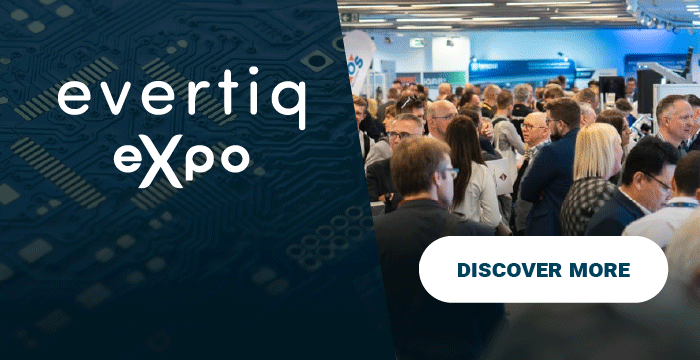Hybrid Connectors: Powering the Next Frontier in IoT and Machine Learning
In the dynamic landscape of technological advancements, the role of connectors has evolved to become a linchpin in the seamless integration and functioning of IoT and machine learning systems. These connectors, which are undergoing a metamorphosis to adapt to the burgeoning needs of modern networks, are at the heart of a revolution that is reshaping the way we perceive and interact with technology. This article delves into the intricacies of these hybrid connectors, elucidating their pivotal role in the contemporary era of data-centric operations.
The Dawn of a New Era
As we stand at the cusp of a new era where the need to measure, store, process, and transmit an ever-increasing volume of data is paramount, connectors have emerged as the backbone supporting this transformation. The latest sensors, capable of collecting a wide spectrum of previously undetectable information, are bridging the gap between physical entities and digital networks. These networks, characterized by their complexity and the necessity for flexibility and miniaturization, are steering away from long-established standards for wiring and connections.
Today, data acquisition methods from sensors, transducers, MEMs, and other membrane-controlled field effect transistors demand custom interconnections and power sources. The connectors and cables, thus, are entrusted with a greater responsibility than ever before, amalgamating power and multiple signal types to cater to the multifaceted demands of these networks.
The Hybrid Connector: A Technological Marve
Hybrid connectors stand as a testament to innovation, embodying the perfect blend of form, fit, and function needed for each network. These connectors are designed to facilitate power supply to multiple sensors while simultaneously collecting data from various detection methods, including mechanical, analog, digital, and RF signals. The conduit systems these connectors form are integral in transmitting high-speed, low-voltage digital signals to central logic processing centers, thereby forming the nerve center of modern information networks.
These connectors are not just about facilitating connections; they are about enhancing the efficacy and efficiency of data transmission. They are customized to match the unique requirements of each network, ensuring seamless integration and functionality.
Bridging Realms: Applications in Hyperspectral Surveillance
One of the standout applications of these connectors is in hyperspectral surveillance, a technology that leverages sensors to identify objects in spectral images. This technology finds applications in diverse fields such as food production, agriculture, and defense, where it is used to monitor various conditions and elements.
In this process, surveillance sensors receive analog data and swiftly convert it to differential digital signal information for transmission. These connectors play a crucial role in this conversion, facilitating the rapid transmission of data without loss of integrity. Moreover, they are integral in transmitting signals from pressure transducers and facilitating the functioning of laser focus and position controllers, which use pulsed phased-array control signals to pinpoint optical information in the field.
The Evolution of Connectivity: Meeting the Demands of AI and Neuromorphic Systems
As artificial intelligence and neuromorphic processing systems continue to grow, the demand for specially defined connectors and cables is escalating. These systems necessitate the simultaneous collection of data from various sources, including video imaging from cameras and analog information from speakers, along with the detection of odors or radiation, and monitoring of human health and well-being.
In this context, man-to-machine learning systems may require wired connections to perform sensitive procedures. Customized cabling and connectors are thus emerging as vital components, capable of adapting to unique and flexible machinery configurations, thereby fostering a seamless integration of man and machine.
The Future of Hybrid Connectors: Customization and Flexibility
Hybrid connectors are evolving to fit portable devices adept at data collection. These connectors are characterized by their ability to support various circuit chips producing different signal types and speeds, including digital, RF, and analog information. Micro and nano-sized connectors pinpoint data and route it to central collection points while concurrently delivering power to the sensors.
The design of these connectors takes into consideration the electronic requirements of the circuit, its usage, and the environment it will be exposed to. The emphasis is on reducing the size and weight of the connector and cable system to facilitate the placement of sensors and detectors in various locations, including on mobile equipment.
Choosing the Right Supplier: A Critical Decision
The selection of a supplier for custom connectors is a critical aspect in the development of these systems. It is imperative to choose a manufacturer with a proven track record in the domain of micro-miniature sizes, ruggedized reliability, and the integration of power within miniaturized connectors.
System designers should collaborate closely with their suppliers, ensuring that they adhere to quality assurance standards and can provide evidence of signal integrity and test capability. In the case of higher digital signal speeds, it is advisable to request high-speed test data, simulations, and eye diagrams of products from the supplier’s signal integrity engineer to mitigate the risk of noise and harmonic interference within the signal pair.
Conclusion
In conclusion, hybrid connectors stand as a beacon of innovation in the technological landscape, fostering a seamless integration of IoT and machine learning systems. As we venture further into this dynamic era, it is evident that these connectors will continue to play a pivotal role, shaping the future of data-centric operations and paving the way for groundbreaking advancements in various industries.
For more information, visit Omnetics


